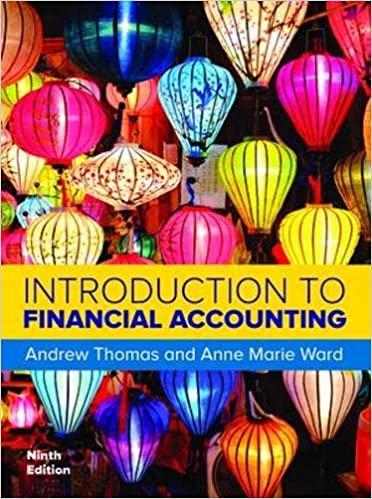Asign Modulo 1 CA1-1 (FASB and Standard-Setting) Presented below are four statements which you are to identify as true or false. If false, explain why the statement is false. 1. GAAP is the term used to indicate the whole body of FASB authoritative literature. 2. Any company claiming compliance with GAAP must comply with most standards and interpretations but does not have to follow the disclosure requirements. 3. The primary governmental body that has influence over the FASB is the SEC. 4. The FASB has a government mandate and therefore does not have to follow due process in issuing a standard. CA1-9 (FASB Role in Rule-Making) A press release announcing the appointment of the trustees of the new Financial Account- ing Foundation stated that the Financial Accounting Standards Board (to be appointed by the trustees) ". . . will become the established authority for setting accounting principles under which corporations report to the shareholders and others" (AICPA news release July 20, 1972). Instructions (a) Identify the sponsoring organization of the FASB and the process by which the FASB arrives at a decision and issues an accounting standard. (b) Indicate the major types of pronouncements issued by the FASB and the purposes of each of these pronouncements. CA1-10 WRITING (Politicization of GAAP) Some accountants have said that politicization in the development and acceptance of generally accepted accounting principles (ie., rule-making) is taking place. Some use the term "politicization" in a narrow sense to mean the influence by governmental agencies, particularly the Securities and Exchange Commission, on the development of generally accepted accounting principles. Others use it more broadly to mean the compromise that results when the bodies responsible for developing generally accepted accounting principles are pressured by interest groups (SEC, American Accounting Association, busi- nesses through their various organizations, Institute of Management Accountants, financial analysts, bankers, lawyers, and so on). Instructions (a) The Committee on Accounting Procedure of the AICPA was established in the mid- to late 1930s and functioned until 1959, at which time the Accounting Principles Board came into existence. In 1973, the Financial Accounting Standards Board was formed and the APB went out of existence. Do the reasons these groups were formed, their methods of operation while in existence, and the reasons for the demise of the first two indicate an increasing politicization (as the term is used in the broad sense) of accounting standard-setting? Explain your answer by indicating how the CAP, the APB, and the FASB operated or operate. Cite specific developments that tend to support your answer. (b) What arguments can be raised to support the "politicization" of accounting rule-making? (c) What arguments can be raised against the "politicization" of accounting rule-making? (CMA adapted) CA1-11 (Models for Setting GAAP) Presented below are three models for setting GAAP. 1. The purely political approach, where national legislative action decrees GAAP. 2. The private, professional approach, where GAAP is set and enforced by private professional actions only. 3. The public/private mixed approach, where GAAP is basically set by private-sector bodies that behave as though they were public agencies and whose standards to a great extent are enforced through governmental agencies. Instructions (a) Which of these three models best describes standard-setting in the United States? Provide justification for your answer. (b) Why do companies, financial analysts, labor unions, industry trade associations, and others take such an active interest in standard-setting? () Cite an example of a group other than the FASB that attempts to establish accounting standards. Speculate as to why another group might wish to set its own standards







